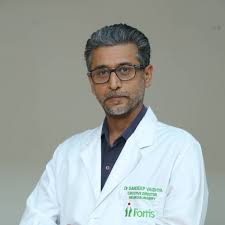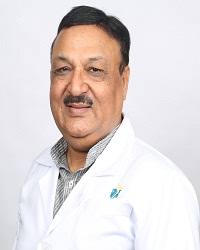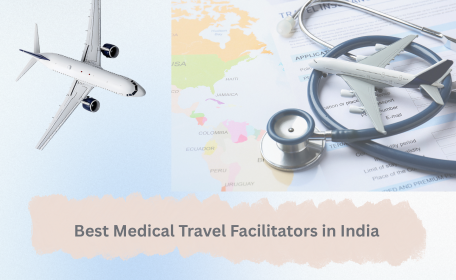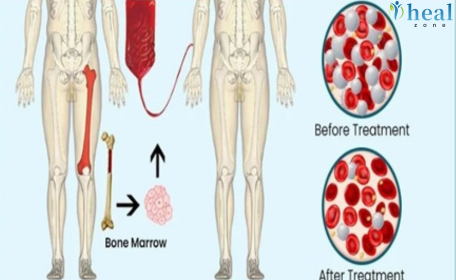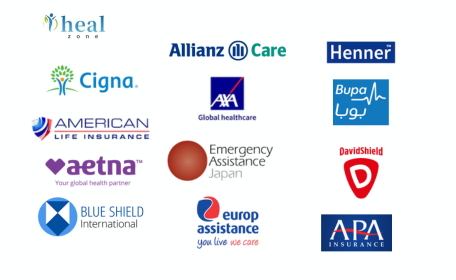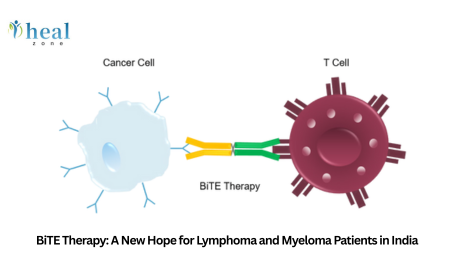What is Kyphosis and What Causes It?
Kyphosis is a spinal condition characterized by an excessive forward curvature of the thoracic (upper) spine, resulting in a rounded or hunched back. This can be mild and postural or severe and structural, often leading to pain, fatigue, and mobility issues.
Common causes include:
- Scheuermann’s Disease (in adolescents)
- Postural Kyphosis (due to prolonged poor posture)
- Congenital Kyphosis (spinal malformation from birth)
- Osteoporosis-related Compression Fractures
- Spinal infections or tumors
- Degenerative Disc Disease
What Are the Symptoms and Signs of Kyphosis?
Kyphosis may vary in severity and symptoms depending on the underlying cause and degree of curvature:
- Visible hunch or rounded shoulders
- Back pain and stiffness
- Fatigue and muscle weakness
- Decreased height over time
- Difficulty standing upright
- In severe cases: shortness of breath or nerve compression symptoms
Severe kyphosis (over 70–80 degrees) may require surgical correction to prevent neurological damage or respiratory issues.
What Are the Types of Kyphosis?
India treats all major types of kyphosis based on origin and structural characteristics:
Postural Kyphosis:
- Most common and benign
- Often seen in teens and office workers
- Treated with physiotherapy and posture correction
Scheuermann’s Kyphosis:
- Structural deformity of vertebrae seen during adolescence
- Typically requires bracing or surgical fusion
Congenital Kyphosis:
- Results from abnormal vertebrae formation during fetal development
- Often progressive and requires early surgical intervention
Osteoporotic Kyphosis:
- Found in older adults due to vertebral fractures
- Treated with vertebroplasty or kyphoplasty
Each type requires a different treatment approach — India’s spine centers offer complete diagnostic and therapeutic solutions.
What Are the Treatment Options for Kyphosis in India?
Treatment depends on severity, age, pain level, and progression of the curve. India offers both non-surgical and surgical options:
Non-Surgical Treatment:
- Bracing: Effective in adolescents with flexible curves
- Physiotherapy: Core strengthening and posture correction
- Pain Management: Anti-inflammatory medications, injections
- Lifestyle Modifications: Ergonomic adjustments, weight loss
Surgical Treatment:
- Spinal Fusion Surgery: The most common surgical option for rigid curves over 60–70 degrees
- Osteotomy Procedures: Bone reshaping in very severe deformities
- Kyphoplasty or Vertebroplasty: For compression fracture-related kyphosis
- Minimally Invasive Surgery (MISS): In select patients for reduced recovery time
India’s spine surgeons tailor the treatment plan based on 3D imaging, curve measurement, and patient-specific goals.
What is the Step-by-Step Treatment Protocol in India for International Kyphosis Patients?
India follows a structured, international-patient-friendly protocol that ensures accurate diagnosis, safe surgery, and complete rehabilitation:
1. Pre-Arrival Planning:
- Teleconsultation with expert spine team
- Sharing of X-rays or MRI scans
- Visa invitation letter and travel coordination
2. On-Arrival Assessment:
- Detailed spine examination
- Advanced imaging: 3D X-rays, EOS imaging, MRI
- Neurological evaluation and pre-anesthetic check-up
3. Surgical Preparation:
- Preoperative physiotherapy
- Nutritional and pulmonary support
- Surgical planning using navigation systems
4. Surgery:
- Duration: 4–7 hours
- Procedures include spinal fusion, osteotomy, or kyphoplasty
- Intraoperative neuromonitoring used for safety
5. Postoperative Care:
- ICU stay: 1–2 days
- Hospital stay: 5–7 days
- Pain management, mobilization, wound care
6. Rehabilitation and Follow-Up:
- Discharge with rehab plan
- Telemedicine follow-up
- Return to full activity in 6–12 weeks
Most international patients stay for 3–4 weeks in India and continue recovery at home with remote support.
Why Should International Patients Choose India for Kyphosis Treatment?
India is globally recognized for its excellence in orthopedic and spine surgery, making it a leading destination for international patients seeking affordable and high-quality kyphosis correction.
Globally Trained Spine Specialists: Many Indian spine surgeons are trained in the US, UK, or Europe and specialize in complex spinal deformities.
State-of-the-Art Technology: Advanced imaging, spinal navigation systems, neuromonitoring, and minimally invasive surgical techniques are widely available.
Massive Cost Savings: Patients save up to 70–80% compared to the US or UK, with the same safety and clinical protocols.
Zero Waiting Time: Patients are often scheduled for surgery within 48–72 hours of arrival.
Excellent Rehabilitation Support: India offers integrated physiotherapy and recovery care under one roof.
English-Speaking Medical Staff: All communication is seamless, ensuring clarity and confidence throughout your treatment journey.
Why Choose Healzone for Kyphosis Surgery in India?
Healzone provides a complete medical tourism solution for patients seeking safe, coordinated treatment in India.
Personalized Care Plans: Healzone works closely with you and top spine teams to create a treatment plan that fits your needs and timeline.
Transparent Pricing: You receive detailed cost estimates in advance — with no hidden charges or billing surprises.
Logistics Support: Healzone handles airport pickup, hotel stay, hospital admission, and interpreters (if needed).
Patient Advocacy: Your dedicated case manager ensures timely care, quality assurance, and coordination with doctors.
Ongoing Virtual Support: Healzone offers teleconsultation follow-ups, access to digital medical reports, and assistance after you return home.
Healzone ensures a safe, smooth, and supportive medical journey from start to finish — making your treatment in India truly stress-free.
What Types of Devices and Surgical Tools Are Used for Kyphosis Correction in India?
India’s advanced spinal centers use international-standard surgical devices, implants, and tools to ensure optimal correction and long-term safety.
Spinal Implants:
- Titanium Rods and Pedicle Screws – Provide durable spinal support
- Expandable or Dynamic Rods – Used in children for continued growth
- Cages and Spacers – Help realign the spine and restore disc height
Surgical Tools and Technologies:
- Intraoperative Neuromonitoring (IONM) – Ensures nerve protection during surgery
- Spine Navigation Systems – 3D-guided systems improve screw placement accuracy
- Microsurgical Instruments – Allow precise bone reshaping during osteotomy
- Robotic-Assisted Tools – Used in advanced cases for enhanced precision
All tools and implants used in India are FDA- or CE-approved, ensuring the same safety standards as in Europe or North America.
What Is the Full Cost Breakdown of Kyphosis Treatment in India?
The cost of kyphosis treatment in India is significantly more affordable than in the West. Here's a typical cost breakdown for an international patient:
|
Treatment Component |
Estimated Cost (USD) |
|
Pre-Surgical Consultation & Imaging |
$300 – $600 |
|
Advanced Scans (MRI, EOS, X-rays) |
$200 – $500 |
|
Blood Tests & Anesthesia Clearance |
$100 – $200 |
|
Surgical Fee (Fusion, Osteotomy) |
$3,000 – $4,500 |
|
Implants (Rods, Screws, Cages) |
$1,500 – $2,000 |
|
Neuromonitoring & OT Equipment |
$400 – $700 |
|
Hospital Stay (5–7 days) |
$500 – $900 |
|
Postoperative Medications |
$150 – $300 |
|
Inpatient Physiotherapy |
$200 – $300 |
|
Telemedicine Follow-up & Rehab Plan |
Included |
|
Total Approximate Cost |
$7,000 – $10,000 USD |
Healzone also offers all-inclusive packages that bundle diagnostics, surgery, stay, medications, and rehab for patient convenience.
What Are the Benefits and Expected Results of Kyphosis Surgery in India?
Kyphosis surgery is life-changing for patients suffering from spinal curvature and its related physical and emotional impacts. When performed by experienced surgeons using advanced technologies, the results are highly rewarding.
Physical Benefits:
- Significant correction of spinal curvature (often >70% improvement)
- Relief from chronic back and shoulder pain
- Better posture, mobility, and spinal alignment
- Enhanced lung function (in severe thoracic kyphosis)
Functional & Emotional Benefits:
- Increased height and self-esteem
- Improved ability to participate in physical activities
- Reduced fatigue and improved endurance
- Enhanced quality of life and social confidence
Patients treated in India report high satisfaction with both aesthetic and functional outcomes, with return to normal activities typically within 8 to 12 weeks.
What Are the Risks or Potential Complications of Kyphosis Surgery?
While India’s surgical facilities follow global safety protocols, every major spinal surgery comes with some potential risks:
Common but Manageable Risks:
- Surgical site infection (1–2%)
- Blood loss requiring transfusion
- Implant failure (rare, <5%)
- Non-union or incomplete fusion (may require revision)
Neurological Complications (Very Rare):
- Nerve root injury or spinal cord damage
- Temporary or permanent numbness or weakness
Risk Management in India:
- Intraoperative neuromonitoring (IONM) to detect any spinal cord risk in real-time
- Strict infection control measures
- Use of advanced bone fusion materials to improve healing
Choosing India doesn’t mean compromising safety — it means gaining expert care at a reduced cost with global standards.
What Aftercare and Rehabilitation Are Required After Kyphosis Surgery?
Postoperative recovery is essential to ensure long-term success. Indian facilities provide complete aftercare, from discharge to home rehab.
In-Hospital Recovery:
- Duration: 5–7 days
- Pain management, wound care, early mobilization
- Physiotherapy begins on Day 2 or 3
Discharge Instructions:
- Avoid bending/twisting for 4–6 weeks
- No heavy lifting
- Medication schedule for pain/inflammation
Home Rehabilitation:
- Guided physiotherapy exercises
- Posture correction training
- Gradual increase in walking and daily activities
- Follow-up imaging to monitor fusion success
Telemedicine Support via Healzone:
- Monthly progress checkups
- Remote access to your surgical team
- Guidance on returning to school, work, or sports
A complete rehab plan is provided, with return to daily life in 2–3 months, and full spinal fusion expected within 6–12 months.
Why India Is a Global Leader in Kyphosis Treatment?
India offers a powerful combination of:
- World-Class Medical Infrastructure
- Globally Trained Spine Specialists
- Cost Savings of Up to 80%
- Advanced Surgical Technologies
- Personalized International Patient Support via Healzone
For patients seeking a long-term, high-quality solution to kyphosis — especially those who cannot afford the high prices in the West — India provides accessible, safe, and life-changing treatment with global outcomes at one-third the cost.

